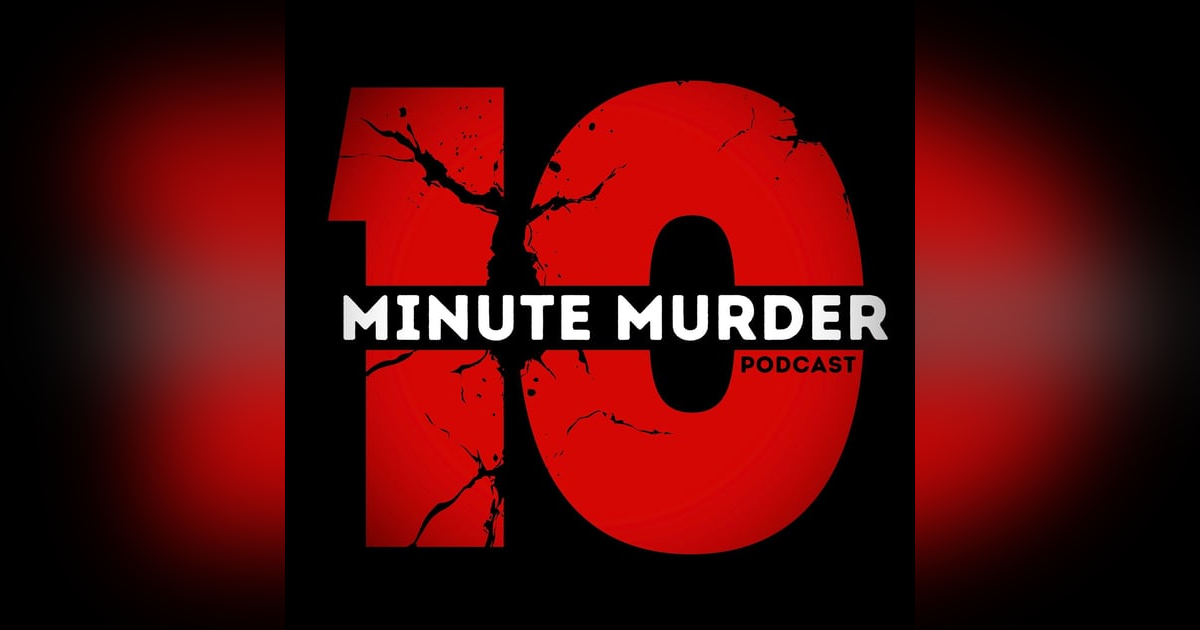Kelly Tinyes and the Basement Horror the Courts Almost Missed

The Last Normal Night: Kelly Tinyes Gets a Phone Call
On the night of March 3, 1989—just one day before her fourteenth birthday—Kelly Tinyes was holding down the fort at her family’s home in Long Island, New York. She was the responsible one that evening. Her parents were out, and it was up to her to keep an eye on her eight-year-old brother, Richard.
It had been a regular night. They ate dinner, the TV was on, and Richard was happily zoning out in front of it. Nothing weird. Nothing dramatic.
Then the phone rang.
Richard beat Kelly to it and picked up. A man’s voice came through, short and to the point: “It’s John. Get Kelly.”
This was the late ’80s. If you wanted to reach someone, you called the house and rolled the dice on who might answer. No cell phones. No DMs.
Richard didn’t overthink it. He didn’t know who John was, and honestly, he didn’t care. Somebody wanted to talk to Kelly. That’s all he needed to know. He handed the phone over and went right back to his cartoons.
Kelly’s call didn’t last long. When she hung up, she told Richard she was heading over to her friend Nicole’s house for a bit. Totally normal. Kids in the neighborhood wandered around back then like unpaid interns for their own free time, with the unspoken rule to be home by the time the streetlights buzzed on.
But Kelly wasn’t just any kid that night. She was supposed to be babysitting.
And while it didn’t seem like a big deal in that moment, it’s the kind of decision that, looking back, feels a lot heavier.
A Short Walk That Turned Into a Bad Feeling
Kelly hadn’t totally forgotten her responsibility. That’s why she made sure to tell Richard where she was going—and that she’d only be gone for a little while.
But “a little while” stretched longer and longer. And when Kelly still wasn’t back, Richard started feeling uneasy.
He knew Nicole’s house. He knew the way. So he did what any worried little brother would do: he walked over to get her.
Only, when Nicole opened the door, she looked confused. Kelly hadn’t been there. Not all night.
Richard was just eight years old. Old enough to understand something wasn’t right, but still young enough that panic hadn’t fully set in. Not yet.
Because almost immediately, a neighborhood friend pointed him in a new direction—toward a different house. They said they’d seen Kelly go inside not long ago.
This time, Richard’s stomach dropped.
Everyone in the neighborhood knew that house. It belonged to the Golubs, and the Golubs had a reputation. Not a good one.
Technically, they had money. John Golub Sr. owned a gas station. But you wouldn’t know it by looking at their place. The house was a wreck—trash piled up outside, a smell that seemed to hang in the air, and the whole family cycling through the same dirty clothes like they were in some kind of laundry boycott.
And unfortunately, the garbage wasn’t even the worst part.
A Search, a Knock, and a Horrifying Discovery
John Jay Golub, the Golubs’ second son, was already infamous in the neighborhood—the kind of teenager you crossed the street to avoid. He was older, meaner, and had made a full-time hobby out of tormenting younger kids like Richard.
Normally, Richard would’ve bolted if he saw John coming. But that night was different. He was alone, and his sister was missing.
So he did what probably felt like the bravest thing an eight-year-old could do: he walked up to the Golubs’ front door and knocked.
No answer.
He knocked again. And again. Still nothing. It was like the whole house had swallowed itself whole.
Running out of options, Richard went home and waited for his parents. When they finally got back, he told them everything—that Kelly had gone toward the Golubs’ place, and no one had seen her since.
They tried knocking too. Still no answer.
At that point, they called the police.
The first time officers showed up, they asked the Golub family—John Sr., his wife Elizabeth, and their two sons Robert and John—whether they’d seen Kelly. Every single one of them said no.
But neighbors had seen Kelly walk into that house. No one had seen her come back out.
When police returned for a second visit and asked to search the home, they found what they were dreading. In the basement, tucked among the piles of trash, inside a sleeping bag hidden in a small storage space, they found Kelly.
She had been brutalized. Her throat was slit. Her torso was slashed. A knife had been used to mutilate her body in ways that don’t make sense to anyone who still has a soul.
There was no question Kelly had been murdered.
And there was no doubt it had happened inside the Golub home.
The only real question was: who did it?
At first, suspicion leaned hard toward John. After all, someone named “John” had called asking for Kelly. And even though John terrorized other neighborhood kids, some people said he had a soft spot for Kelly. She might’ve been the one person he didn’t treat like a target.
John was the link between Kelly and that house.
But then investigators found something they couldn’t ignore: a bloody handprint next to Kelly’s body. And it wasn’t John’s.
The DNA came back a full match for Robert Golub—John’s 21-year-old brother.
Robert Golub Is Arrested, but the Story Doesn’t Feel Finished
The bloody handprint sealed it. It wasn’t John who had left it. It was his older brother, 21-year-old Robert Golub.
Robert was arrested and charged with Kelly’s murder.
At trial, his defense team tried a few different moves. First, they argued that the police search of the Golub house had been illegal. When that didn’t fly, they switched gears and went after the evidence itself. DNA science was still the new kid on the block back then. If Robert got convicted, it would be the first time DNA evidence had ever secured a murder conviction in New York State.
An expert explained to the court that there was a one in 707 million chance that someone other than Robert had left that bloody handprint.
The jury didn’t need much convincing after that. DNA won its first big case.
Robert Golub was found guilty of second-degree murder and sentenced to twenty-five years to life.
He tried to appeal, but he was shot down. After serving his minimum, he applied for parole in 2013, 2015, 2017, 2019, and 2021. Each time, he was denied.
During his trial and for the first twenty-five years behind bars, Robert denied killing Kelly. But at his 2013 parole hearing, he finally changed his story—or at least, part of it. He told the board that Kelly’s death had been an accident. According to him, they were standing at the top of the basement stairs when he accidentally knocked her down. What followed—beating her, stabbing her—he couldn’t really explain. Which, honestly, doesn’t scream “accident.”
Even with Robert convicted, some things about Kelly’s death didn’t add up.
Starting with why she went to the Golubs’ house in the first place.
John—the one who called their house—claimed he hadn’t seen Kelly that day. Robert said the same. According to John, he’d spent the evening in his room with two friends, getting high and doing a whole lot of nothing.
To this day, Kelly’s family has never been sure if that’s the truth, or if John had called Kelly over for something else entirely.
“We won’t stop until we get answers,” Kelly’s father told reporters at the time.
John’s two friends backed up his story. They said he was with them, hanging out on the grimy mattress in his bedroom, passing around a joint. But even they admitted John left the room at least three times that night.
To make a phone call?
To lure Kelly over?
Or to do something much worse?
No one could say for sure.
What we do know is that DNA only connected Robert to Kelly’s body.
And within two days of Kelly’s murder, John packed up and left town.
While his parents stayed in that same wreck of a house, John disappeared. Over the years, he picked up a handful of minor charges—things like harassment and accusations of sexual misconduct—but nothing tied him back to Kelly.
Kelly’s family still believes John had a hand in what happened. They’ve spent over thirty years pushing for the investigation into him to be reopened.
But the law is slow to move when it thinks it’s already got its guy. Robert is behind bars. As far as the state is concerned, case closed.
Unless a new witness steps forward, some hidden piece of evidence surfaces, or John himself confesses, the full truth about what happened to Kelly Tinyes may never come out.
And unfortunately, none of those things have been easy to come by.















